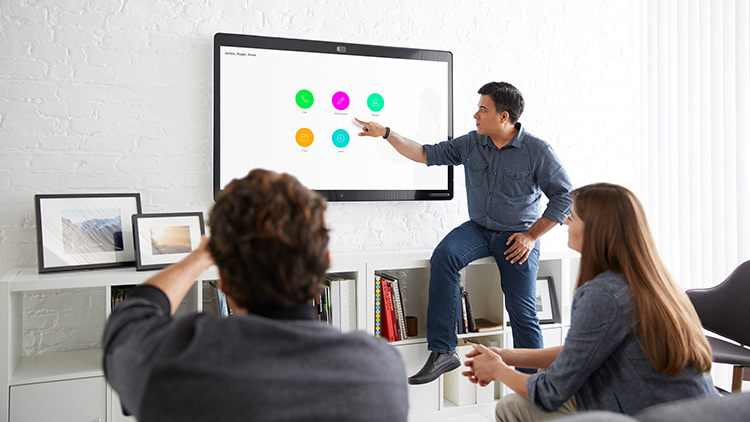At InfoComm 2017, one of the most discussed of the newer entrants into the exhibitor space was Cisco Systems. Some attendees told me that Cisco’s growing presence was a sign of the impending dominance of IT over AV. The company's booth was among the largest at the show. When you study Cisco’s past, it’s hard not to wonder about what its commanding appearance will really mean for the professional AV industry. Will AV over IP become IP over AV?
Cisco has a history of entering new markets by way of acquisitions. In October, 1998, when they acquired Selsius Systems, an IP PBX and phone manufacturer, it spirited the VoIP revolution. Within 12 years they had shipped 30 million telephones. Also, it can be argued that they brought about the demise of Nortel, the major PBX vendor at the time. Since then, another major telephony manufacturer, Avaya has fought hard to compete, but they recently also showed signs of significant strain.
- Many people may not know that Cisco entered the traditional professional AV channel in 2006 by acquiring SyPixx Systems, a manufacturer of video surveillance equipment. In 2009, they purchased Tandberg and had HD video conferencing within two years. What is Cisco up to? Why did its InfoComm presence seem so energized? For one, Cisco supports the Institute for Electrical and Electronics Engineers IEEE 802.1 Audio Visual Bridging (AVB/TSN) standard on select Cisco Catalyst 3850 and Cisco Catalyst 3650 switches. According to Cisco, the IEEE AVB standard makes it easier to integrate new services and for AV equipment from different vendors to interoperate.
- Additionally, in a visit to the Cisco booth at InfoComm, I was told the company's major AV platform is Spark. At its core, Spark is a collaboration ecosystem with audio or video calling and real-time sharing of files and screens. It also has interactive white boarding capability.
Between Cisco Spark, AVB switches, and more booth space at InfoComm, where will this take the AV industry? With 11 acquisitions by Cisco in just 2016 and 2017, I wasn’t surprised that my booth tour was shared by some small competitors. I had to wonder if they were sizing up the competition or interested in being acquired. Cisco’s success in the AV space may depend on its ability to educate its sales channels about the state of AV technology. This was a major problem for the company when it entered telephony. Regardless of the outcome, with the promise of Spark and the industry’s enthusiastic reaction to it, it seems certain that Cisco will be a major player in the AV marketplace.
Phil Hippensteel, PhD, is a regular contributor to AV Technology magazine. His Byte-Size Lessons in AV/IP offer flash classes on managing audiovisual content over IP networks.
Key Features: Cisco Spark
● White boarding: Cisco Spark Board and any Cisco Spark app-enabled device can white board interactively back and forth and the resulting whiteboard is automatically saved to a virtual space associated with the ongoing meeting.
● Video conferencing: Cisco says that "Competitive products offer a cumbersome experience with the way video is laid out on screen and dual cameras which is confusing for the user (not sure know which camera to look at). Cisco Spark Board’s single integrated camera takes the guess work out, and layout is pleasing and intuitive whether just in a video conference or with video conference and a whiteboard session concurrently."
● Some competitive products are PC app centric vs workflow centric. The Cisco Spark Board is workflow centric, so users can move from conferencing, to sharing presentations, to white boarding with just a just of their finger.
● From a cost standpoint, Cisco states that "the Spark Board gives users a much easier entry point with a lower hardware cost and subscription-based model. This makes scalability much easier."
● Continuous workflow: According to Cisco, "no other product on the market offers the integrated communications approach that allow users to be connected to the meeting content before, during and after everyone has left the physical room."
MORE INFO
Cisco Spark Board
https://www.youtube.com/watch?v=aSkjoX_N1dY
